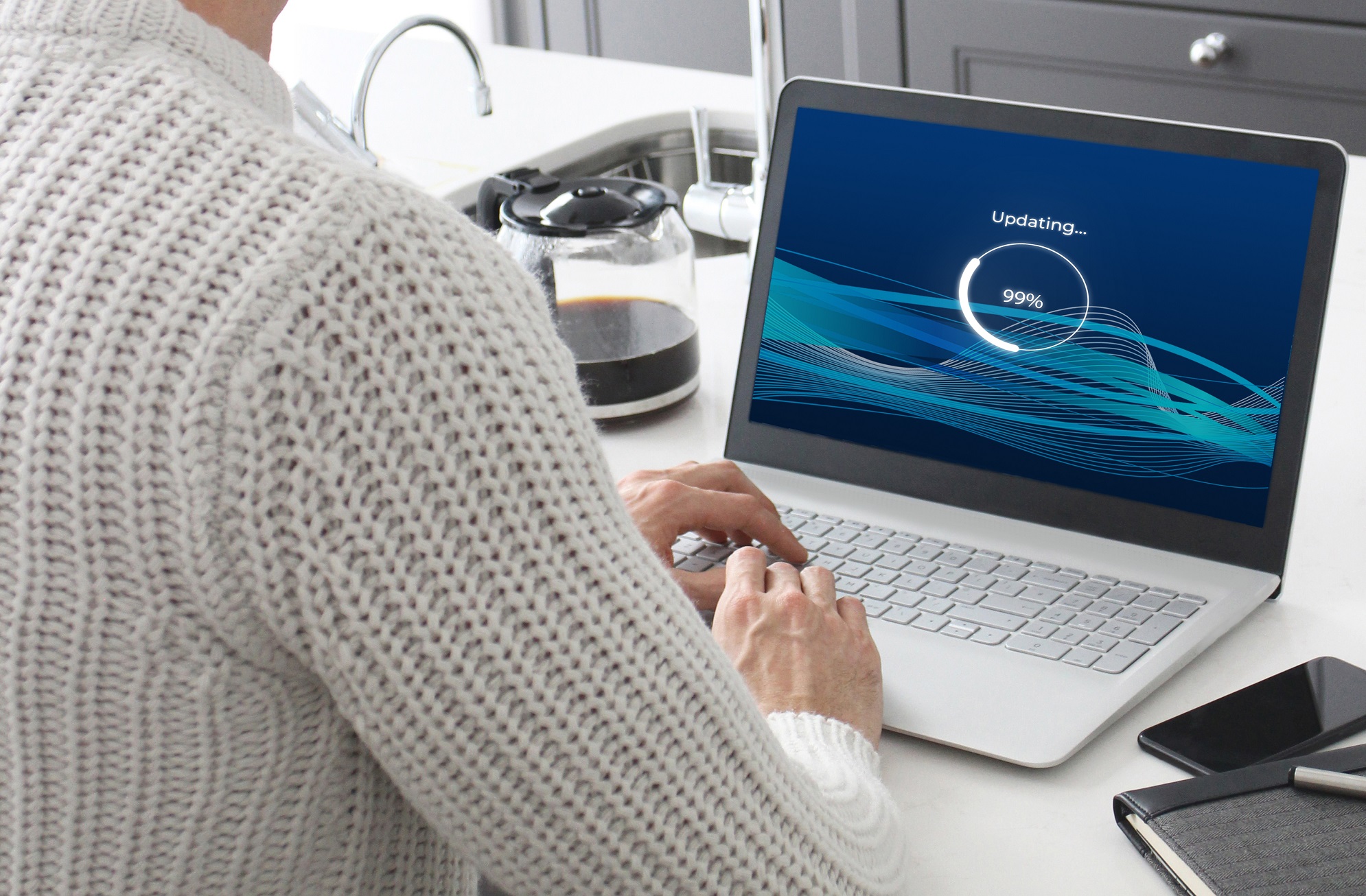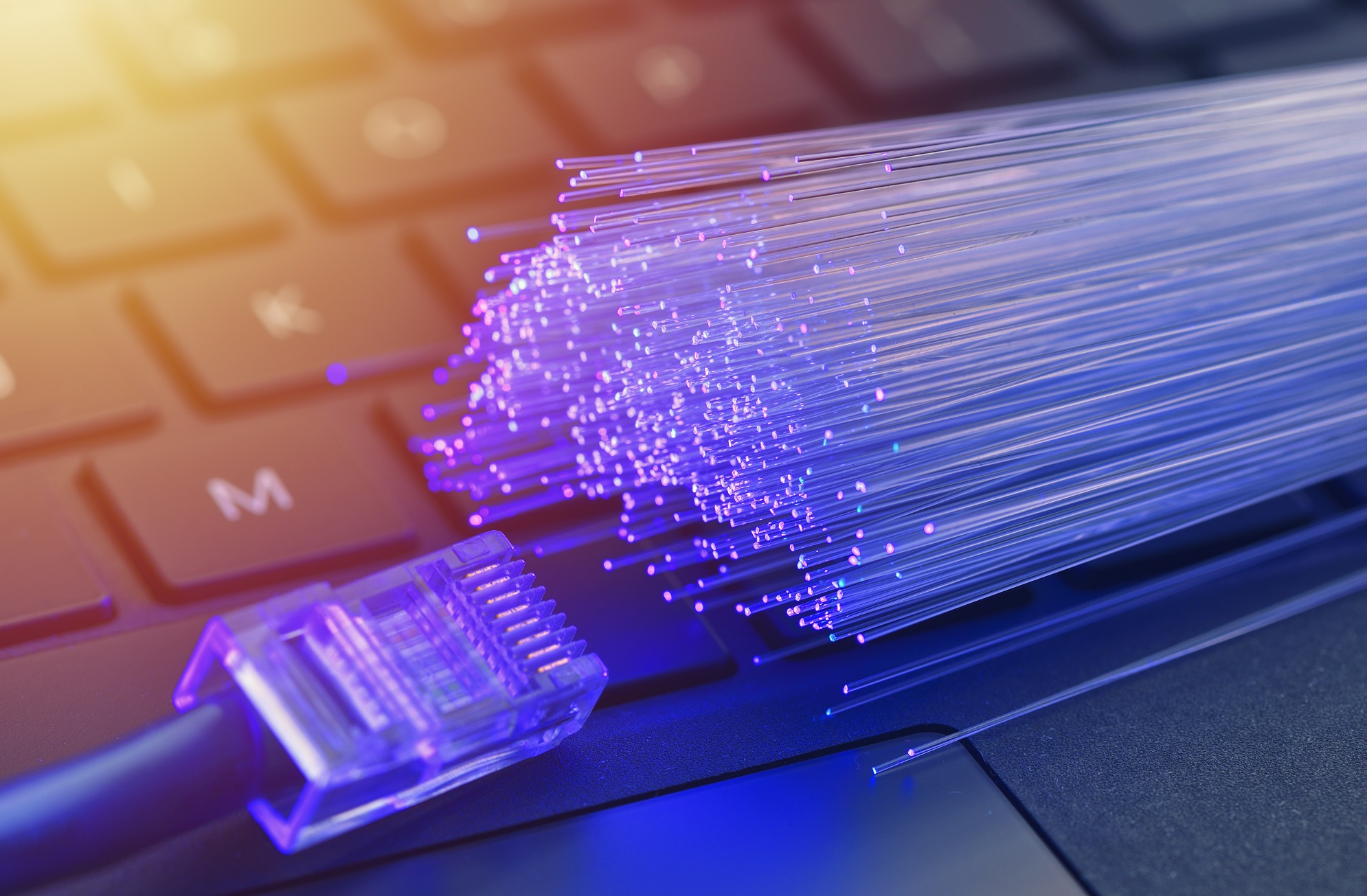Shining a light on fibre optic networks
Categories:
Telecoms
Optical Fibre
When it comes to choosing the best broadband or connectivity solutions, ‘fibre optic’ and ‘optical fibre’ are often used by the service provider – but what do these terms actually mean?
Put simply “Fibre optic” networks or connections are ones which transmit data at least part of the way using a cable with optical fibres inside – a fibre optic cable. Historically telephone lines used copper cables to transmit phone calls and later data. As demand for data increased, service providers started to upgrade their networks replacing sections with fibre optic cables, which are capable of transmitting huge amounts of data compared to the same size copper cable.
The fastest connections available today are those which are complete end to end links using fibre optic cable. This is known as “fibre to the home” or “FTTH”.
So, what is optical fibre and why is it so good at transmitting data?

Optical fibre is a very long thin fibre, about the width of a human hair, that is made up of two slightly different pieces of glass - one in the centre called the core, and one around it, called the cladding.
The fact they are different allows information to be sent as light from a laser down the optical fibre core without it escaping. It reflects off the interface between the core and the cladding.
The amount of data you can send isn’t really limited by the fibre itself (think of the fibre as a hollow pipe). The limit is the ability of the laser at one end to package the data as digital on/off 1’s and 0’s and send it to the receiver at the other end to unpackage the data. And, of course, the information travels along the optical fibre at the speed of light, which is to say it’s extremely fast.
Modern optical fibres are made under extremely precise, controlled conditions so, unlike normal everyday glass which is brittle and snaps when bent, optical fibres are flexible enough to be able to form a loop around the outside of a 10p piece. They can still be cut or crushed, so optical fibres are packaged together and protected into a cable.
The exact number of fibres and the construction of the cable depends on the application. This could range from a simple cable to connect to the modem in your house, which would need just one fibre in a flexible, low smoke jacketed cable all the way to submarine cables.
These are typically very heavy cable constructions where lots of groups of fibres are protected in hollow steel tubes which are themselves surrounded by stranded layers of steel wires, built to survive for decades under the intense pressures found at the bottom of the world’s oceans.
Prysmian Telecoms: Linking the future. Pioneering global opportunities for industries and communities
Supporting the telecommunications industry for 100 years, Prysmian Group Telecoms UK supplies the widest range of fibre optic cable, accessories and connectivity equipment for ultrafast broadband and 5G infrastructure.
From optical fibre and optical and copper cables to connectivity components and accessories, we’re helping to link communities, continents and countries faster and more efficiently than ever before.
Our global presence, combined with our experts’ regional knowledge, mean we’re uniquely placed to support the needs of every customer: from manufacturing high-performance and cost-effective data cables within tight lead times, to offering specialised network solutions which enable high-speed connectivity in the core network, within datacentres, or at the edge. And of course, our proprietary optical fibre technology sets us apart from our competitors.
Discover more about our products and services and see how we can help you on your next project.



